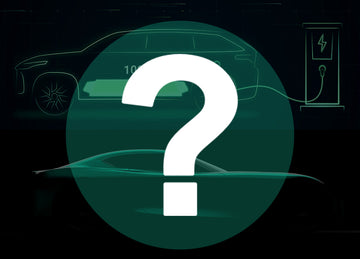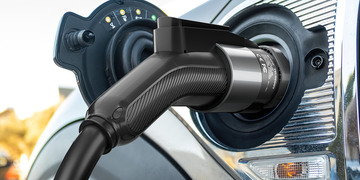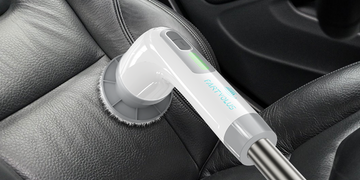With the 2030 ban on sales of conventional gas-powered cars looming in, drivers transitioning to the greener side could find themselves at a crossroads. While electric vehicles (EVs) promise zero emissions, lower costs, and a smaller carbon footprint, those who have become accustomed to the virtually unlimited driving range of traditional cars could be thinking twice about relying solely on electric power. The good thing, though, is there's another type of car that could ease this transition to fully electric vehicles - hybrid vehicles.
What Is a Hybrid Car?

A hybrid vehicle, as the name suggests, combines two or more distinct power sources to propel itself. Most commonly, hybrid cars integrate a gasoline engine with an electric motor. The primary goal of hybrid technology is to improve fuel efficiency and reduce emissions by utilizing the electric motor to supplement the gasoline-powered engine. There are four main types of hybrid cars: mild hybrids, full hybrids, plug-in hybrids, and EVs with Range Extender.
Types of Hybrid Cars
Mild Hybrids: These hybrids don't require external charging. Instead, Mild-Hybrid Electric Vehicles recharge their batteries using power from the gasoline engine and energy from regenerative braking.
Full Hybrids: These hybrids have a more capable electric component than mild hybrids. Full hybrids can run on battery power alone for a distance. They are further divided into two types: parallel and series. Parallel hybrids can draw power from both the gasoline engine and electric motor. Series hybrids solely rely on the electric motor powered by the gasoline engine.
Plug-in Hybrids: Plug-in hybrid cars primarily rely on battery power for propulsion and only use the gasoline engine when the battery is low on charge. They offer extended electric-only driving ranges.
EVs with Range Extender: Although not technically hybrids, Range Extender Electric Vehicles (REEVs) use a gasoline engine to charge the battery or sustain the electric motor's operation once the battery is depleted. This feature ensures you won't be stranded without power.
Differences Between Hybrid & Electric Cars

Hybrid and electric cars differ primarily in how they generate and store energy for propulsion:
Power Sources:
Hybrid Cars: Use a combination of a gasoline engine and an electric motor to drive the wheels. The gasoline engine charges the battery and provides additional power when needed.
Electric Vehicles: Rely entirely on electric car batteries. They do not have an internal combustion engine and produce zero tailpipe emissions.
Fuel Efficiency:
Hybrid Cars: Offer improved fuel efficiency compared to traditional gasoline cars, but they still rely on gasoline for propulsion.
Electric Vehicles: Are highly energy-efficient and produce zero tailpipe emissions, relying solely on electricity for power.
Charging:
Hybrid Cars: Do not require external charging since the battery is primarily charged through regenerative braking and the gasoline engine.
Electric Vehicles: Need to be charged regularly using electrical outlets or charging stations.
Electric-Only Range:
Hybrid Cars: Have a limited electric-only range, typically a few miles, for low-speed, stop-and-go driving.
Electric Vehicles: Can travel much longer distances on electric power alone, with ranges varying from around 100 to over 300 miles on a single charge, depending on the model.
Does It Make Sense to Buy a Plug-in Hybrid Car?

Whether it makes sense to buy a plug-in hybrid (PHEV) depends on several factors, including your driving habits, access to charging infrastructure, environmental concerns, and budget. Here are some considerations to help you decide if a PHEV is a good choice for you:
Driving Habits: PHEVs are well-suited for individuals with relatively short daily commutes or regular access to charging stations. If you mainly drive short distances and can charge your PHEV at home or work, you can maximize the electric-only portion of your vehicle's capabilities, reducing your reliance on gasoline.
Charging Infrastructure: Owning a PHEV is more convenient if you have access to charging infrastructure. Without easy access to charging, you may struggle to use your PHEV to its full potential and may end up relying on gasoline more than electricity.
Environmental Concerns: If reducing your carbon footprint is a top priority, a PHEV can be a meaningful step toward sustainability. It allows you to minimize gasoline usage during everyday driving, which can significantly reduce greenhouse gas emissions compared to traditional gasoline cars.
Budget: PHEVs often have a higher upfront purchase price compared to traditional gasoline cars. However, you may qualify for government incentives or tax credits that can help offset the initial cost. It's important to consider the total cost of ownership, factoring in fuel and maintenance savings over time.
Range Needs: Consider your typical driving range. PHEVs have a limited electric-only range, usually between 20 to 50 miles, although some models offer more extended ranges. If you frequently drive longer distances, a fully electric vehicle (EV) or a hybrid may be a better choice.
Convenience: PHEVs offer the convenience of both gasoline and electric power sources. If you want the flexibility to switch between the two and avoid range anxiety, a PHEV can be a suitable choice.
Incentives: Check for any government incentives or rebates available in your area for PHEV purchases. These incentives can make the PHEV more financially appealing.





